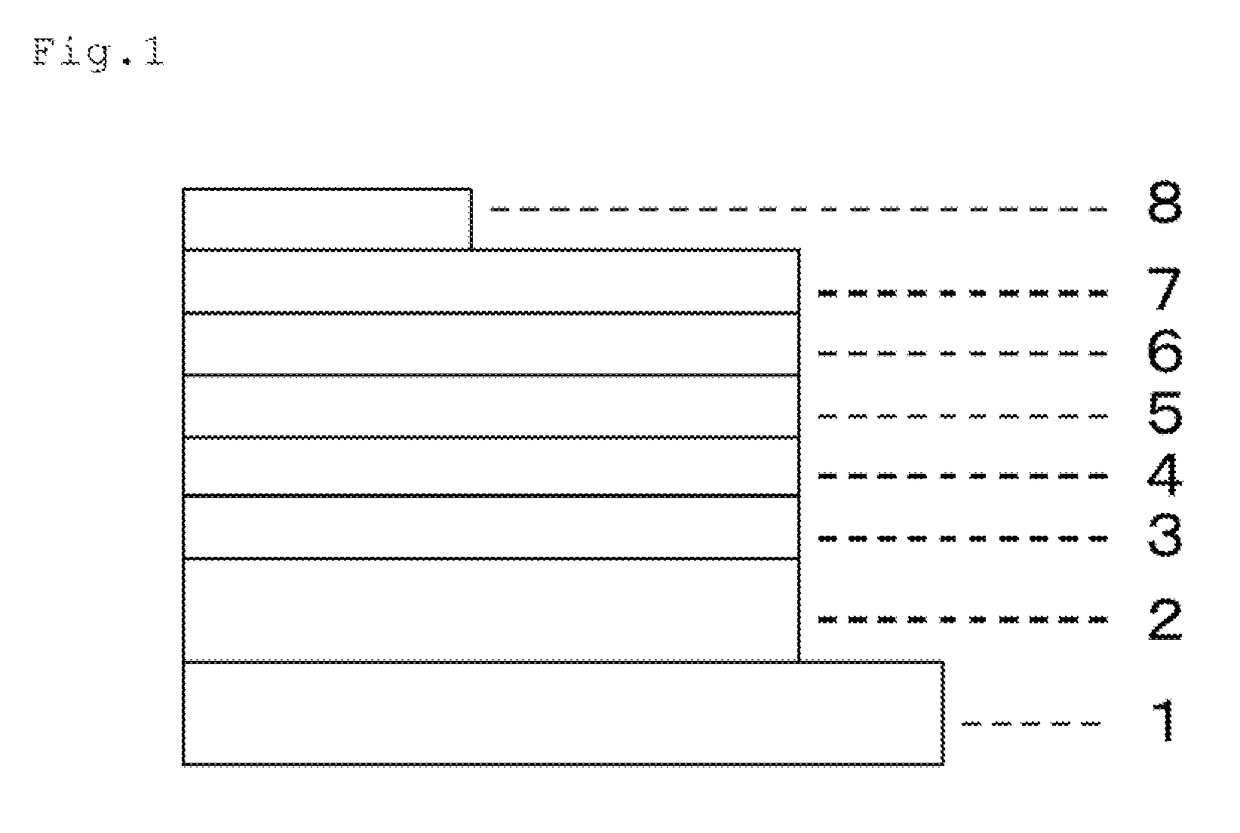Organic electroluminescent element
a technology of electroluminescent elements and organic materials, applied in organic chemistry, organic semiconductor devices, luminescent compositions, etc., can solve the problem of unreachable high-efficiency light emission, achieve the effect of alleviating the bias of a light-emitting region, improving the characteristics of the device, and suppressing the leakage of exciton and a charge to a peripheral layer
- Summary
- Abstract
- Description
- Claims
- Application Information
AI Technical Summary
Benefits of technology
Problems solved by technology
Method used
Image
Examples
example 1
[0136]Each thin film was laminated by a vacuum deposition method at a degree of vacuum of 2.0×10−5 Pa on a glass substrate on which an anode formed of indium tin oxide (ITO) having a thickness of 70 nm had been formed. First, copper phthalocyanine (CuPC) was formed into a hole-injecting layer having a thickness of 30 nm on the ITO. Next, 4,4-bis[N-(l-naphthyl)-N-phenylamino]biphenyl (NPB) was formed into a hole-transporting layer having a thickness of 15 nm. Next, Compound 1-30 serving as a first host (H1), Compound 3-2 serving as a second host (H2), and an iridium complex [iridium(III) bis(4,6-difluorophenyl)-pyridinato-N,C2′] picolinate (FIrpic) which is a blue phosphorescent material, serving as a light-emitting layer guest (dopant) were co-deposited from vapor deposition sources different from one another to form a light-emitting layer having a thickness of 30 nm. At this time, a vapor deposition rate ratio among the first host, the second host, and FIrpic was 47:47:6. Next, Alq...
examples 2 to 11
[0137]Organic EL devices were each produced in the same manner as in Example 1 except that a compound shown in Table 1 was used as the second host of the light-emitting layer.
examples 12 to 24
[0138]Organic EL devices were each produced in the same manner as in Example 1 except that: Compound 1-99 was used as the first host of the light-emitting layer; and a compound shown in Table 1 was used as the second host thereof.
PUM
 Login to View More
Login to View More Abstract
Description
Claims
Application Information
 Login to View More
Login to View More - R&D
- Intellectual Property
- Life Sciences
- Materials
- Tech Scout
- Unparalleled Data Quality
- Higher Quality Content
- 60% Fewer Hallucinations
Browse by: Latest US Patents, China's latest patents, Technical Efficacy Thesaurus, Application Domain, Technology Topic, Popular Technical Reports.
© 2025 PatSnap. All rights reserved.Legal|Privacy policy|Modern Slavery Act Transparency Statement|Sitemap|About US| Contact US: help@patsnap.com



